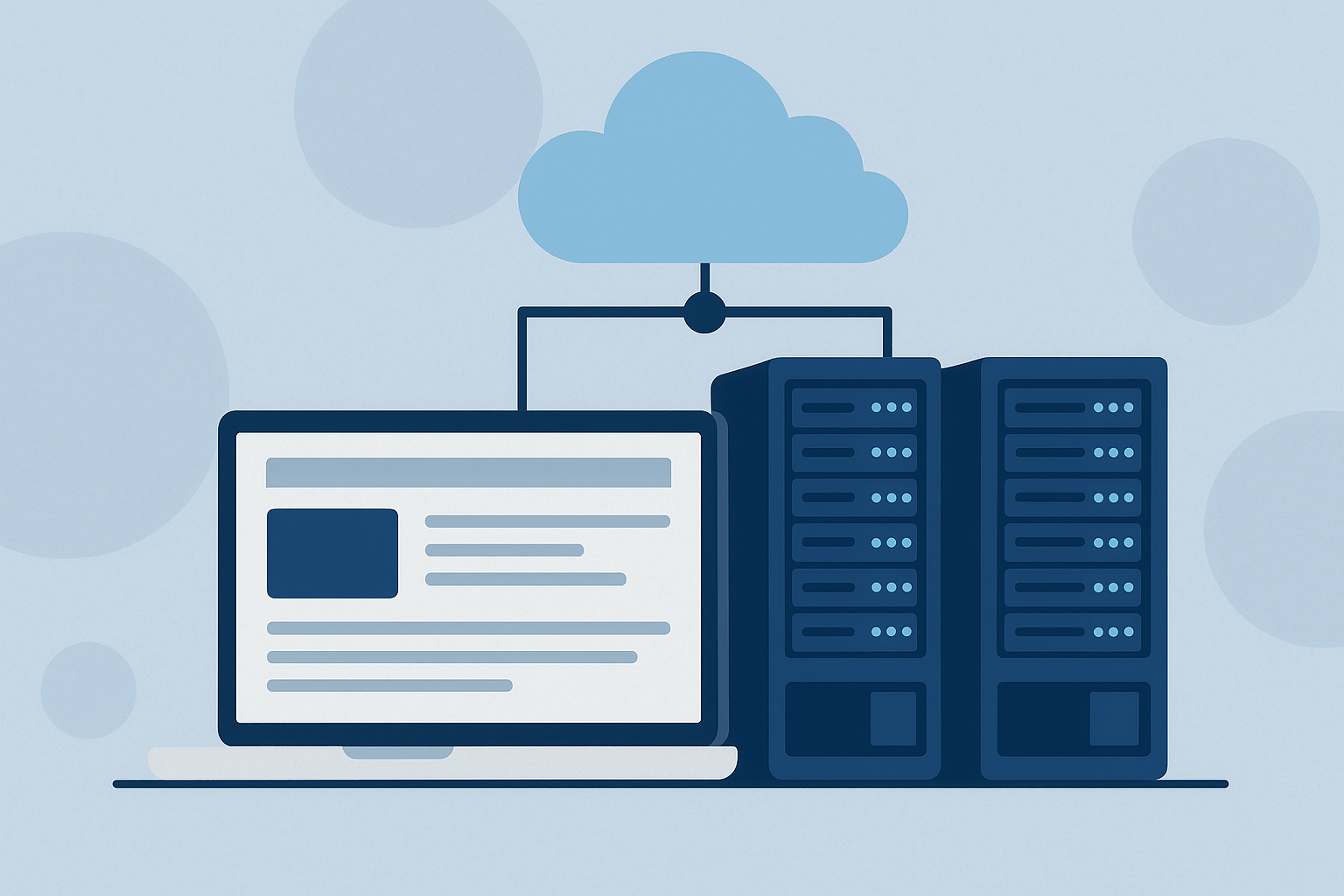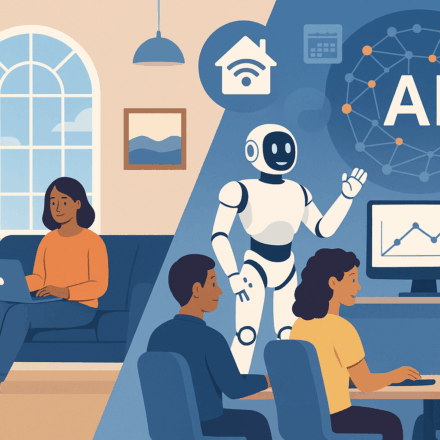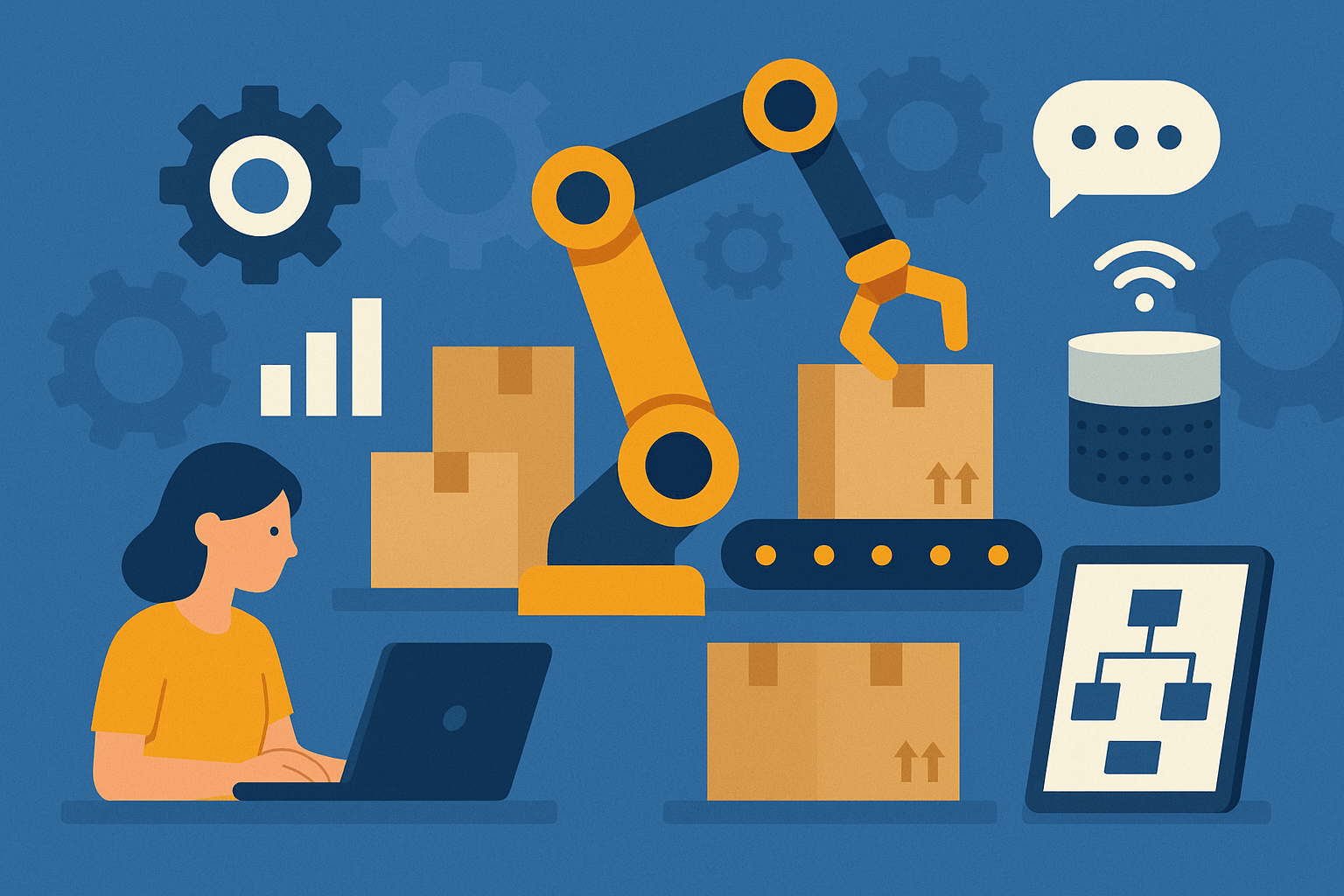What is Artificial Intelligence? A Beginner’s Guide
Table of Contents
- What is Artificial Intelligence?
- A Brief History of AI
- Types of Artificial Intelligence
- 1. Narrow AI (Weak AI)
- 2. General AI (Strong AI)
- 3. Superintelligent AI
- How Does AI Work?
- Common Applications of AI
- Benefits of AI
- Challenges and Concerns
- Getting Started with AI
- Learn the Basics
- Practice with Tools
- Follow AI News
- Conclusion
Artificial Intelligence, or AI, is one of the most talked-about technologies in the world today. From voice assistants like Siri and Alexa to self-driving cars and smart recommendations on Netflix, AI is all around us. But what exactly is AI, and how does it work?
In this beginner’s guide, we’ll break down the basics of artificial intelligence in a simple, easy-to-understand way. Whether you’re just curious or looking to explore a career in tech, this article will give you a solid foundation.
What is Artificial Intelligence?
Artificial Intelligence (AI) refers to the capability of machines, software, or computer systems to perform tasks that typically require human intelligence. Rather than simply following hard-coded instructions, AI systems are designed to analyze data, learn from experience, adapt to new inputs, and perform intelligent actions. The goal of AI is to replicate cognitive functions such as reasoning, learning, problem-solving, perception, and even decision-making.
At its core, AI enables machines to simulate aspects of human thought. This includes learning from data (machine learning), understanding and processing language (natural language processing), recognizing patterns (such as in images or behaviors), and making autonomous decisions based on logic or prediction models. These functions are made possible through the development of algorithms that allow machines to process and interpret complex data with increasing accuracy over time.
AI systems are applied across a wide spectrum of tasks—some relatively simple, others highly advanced. On the simpler end, AI is used to automatically sort spam emails, recommend songs or videos, or suggest autocorrections as you type. On the more complex end, AI powers technologies like medical diagnostic tools that can detect diseases from imaging data, autonomous vehicles that navigate traffic, and fraud detection systems that analyze financial transactions in real-time.
A Brief History of AI
- 1956: The term “Artificial Intelligence” was coined at a conference at Dartmouth College.
- 1997: IBM’s Deep Blue beat world chess champion Garry Kasparov.
- 2011: IBM Watson won the game show Jeopardy! against human champions.
- 2016: Google’s AlphaGo defeated a world champion Go player.
Today, AI is part of everyday technology and continues to evolve rapidly.
Types of Artificial Intelligence
1. Narrow AI (Weak AI)
Narrow AI is designed to perform one specific task extremely well, but it lacks general intelligence and cannot operate beyond its programmed scope. This type of AI is the most common today and powers many tools we interact with daily. While it may appear intelligent, it doesn’t truly understand or think—it simply follows patterns based on data and rules.
Examples:
- Voice Assistants (e.g., Siri, Alexa): Understand voice commands but limited to specific functions.
- Google Search: Uses AI to interpret search queries and rank results.
- Face Recognition in Phones: Identifies facial features to unlock devices.
- Spam Filters: Detects unwanted emails based on predefined patterns.
2. General AI (Strong AI)
General AI refers to machines with the ability to perform any intellectual task a human can do. It would have reasoning, problem-solving, learning, perception, and even emotional understanding, all across multiple domains—without being specifically programmed for each one. As of now, General AI remains a theoretical goal; no existing system has achieved this level of capability.
Examples (hypothetical/future):
- A universal AI assistant that can learn any new task just by observing it, similar to how humans do.
- An AI doctor that can diagnose diseases, perform surgery, counsel patients, and write research papers.
3. Superintelligent AI
Superintelligent AI refers to a hypothetical form of AI that surpasses human intelligence in all aspects—logic, creativity, decision-making, and even social intelligence. This concept is often discussed in philosophy and ethics, as it raises serious questions about control, safety, and the future of humanity. It’s a popular theme in science fiction.
Examples (fictional):
- Jarvis (then Vision) from Marvel: Displays advanced reasoning, emotional understanding, and autonomous decision-making.
- Skynet from Terminator: Becomes self-aware and sees humanity as a threat.
- HAL 9000 from 2001: A Space Odyssey: An intelligent computer that overrides human commands.
How Does AI Work?
- Data Collection: AI systems begin by gathering and processing vast amounts of data. This data can come in many forms—text from websites, spoken words from voice assistants, images from cameras, or sensor data from devices. The quality and quantity of this data are crucial because AI models need large, diverse datasets to learn effectively. For example, a speech recognition AI will need thousands of hours of recorded conversations across different accents and languages to perform well. The data must also be labeled and organized properly, especially in supervised learning tasks where the AI learns by example.
- Training Algorithms: Once the data is collected, machine learning algorithms are applied to find patterns and relationships within it. These algorithms include statistical techniques and models that process input data to identify trends, correlations, or features. For example, an algorithm might learn to differentiate between images of cats and dogs by analyzing pixel patterns. During training, the algorithm adjusts its internal parameters to reduce errors in predictions. This phase can be computationally intensive and often requires specialized hardware like GPUs or TPUs to accelerate the learning process.
- Model Building: After training, the system develops a model—a mathematical representation of what it has learned. This model can then make predictions, classifications, or decisions based on new, unseen input. For example, a trained spam filter uses its model to decide whether a new email is likely spam or not. The quality of the model depends on both the data it was trained on and the sophistication of the algorithm. Some models are simple and interpretable (like decision trees), while others, such as deep neural networks, are more complex but highly powerful for tasks like image recognition or natural language understanding.
- Continuous Learning: Many AI systems are designed to improve over time through a process called continuous or incremental learning. As the system is exposed to new data, it updates its model to reflect the latest information. This is essential in dynamic environments, such as recommendation engines (e.g., Netflix or YouTube), where user preferences constantly evolve. Continuous learning helps maintain accuracy, reduce bias, and adapt to changes without needing a complete retraining from scratch. It also enables AI to learn from mistakes by refining its responses or decisions based on feedback.
Common Applications of AI
- Voice Assistants (e.g., Siri, Google Assistant)
- Smart Recommendations (e.g., Netflix, YouTube)
- Image and Facial Recognition
- Autonomous Vehicles (e.g., Tesla’s self-driving cars)
- Chatbots and Customer Service
- Medical Diagnosis Tools
- Language Translation Services
Benefits of AI
- Efficiency: AI excels at automating repetitive and time-consuming tasks that typically require human intervention. This includes activities like data entry, scheduling, invoice processing, or answering common customer service inquiries. By taking over these routine operations, AI enables organizations to allocate human resources to more strategic and creative tasks. As a result, workflows become faster, more consistent, and less prone to human fatigue or oversight. For example, AI-powered chatbots can instantly respond to hundreds of customer queries, eliminating delays caused by manual support queues.
- Accuracy: One of the standout advantages of AI is its ability to reduce errors, especially in tasks involving large volumes of data. Unlike humans, AI systems do not experience fatigue or inconsistency, which makes them highly reliable in data-intensive environments such as financial forecasting, medical diagnostics, or quality control in manufacturing. For instance, AI tools used in radiology can detect abnormalities in medical images with accuracy comparable to or better than human specialists when trained properly. This helps minimize costly mistakes and improves decision-making quality.
- Scalability: AI systems are capable of processing and analyzing massive datasets far beyond human capacity. While a person might analyze hundreds of records in a day, AI can scan millions in minutes. This scalability is critical in industries like e-commerce, finance, and cybersecurity, where systems must evaluate enormous volumes of transactions or user behavior in real-time. Scalability also allows businesses to expand their operations without a linear increase in staffing costs, as AI can handle surges in demand with little or no performance degradation.
- Personalization: AI enables highly personalized experiences by analyzing user behavior, preferences, and interactions. From content recommendations on streaming platforms to customized product suggestions in online stores, AI learns what individual users like and tailors content accordingly. This leads to better user engagement, increased satisfaction, and often, higher conversion rates. AI-driven personalization is also used in healthcare, where it can suggest treatment plans based on a patient’s unique health history and genetic profile.
- 24/7 Availability: Unlike humans, AI systems don’t need rest, breaks, or sleep. They can operate continuously around the clock, making them ideal for applications that require constant uptime and availability. This is especially valuable in global businesses, where customers from different time zones expect support at any hour. AI systems—such as chatbots, monitoring tools, or fraud detection engines—ensure that services remain responsive and secure at all times, enhancing user trust and operational resilience.
Challenges and Concerns
Despite its benefits, AI also brings challenges:
- Job Displacement: One of the major concerns surrounding the widespread adoption of AI is its impact on employment. AI systems are capable of automating not just repetitive manual tasks but also complex cognitive processes. This poses a risk to jobs in industries such as manufacturing, customer service, administration, and logistics. While AI also creates new opportunities in technology and data-driven fields, the shift may leave behind workers whose roles become obsolete. Addressing this challenge requires proactive reskilling programs, workforce adaptation strategies, and supportive public policies to ensure an equitable transition.
- Bias in AI Models: AI systems learn from the data they are trained on, and if that data contains historical or social biases, the models can inherit and reinforce those biases. For example, an AI used in recruitment might unintentionally favor certain genders or ethnicities if past hiring practices were biased. This can lead to unfair treatment and discrimination in critical areas like hiring, lending, or law enforcement. Ensuring fairness in AI development requires careful data curation, transparent evaluation processes, and a strong focus on ethical AI practices.
- Privacy Issues: Many AI applications rely heavily on personal data to function effectively—this includes browsing history, voice recordings, GPS data, and more. While this enables highly personalized experiences, it also raises serious privacy concerns, especially when data is collected without clear consent or used for undisclosed purposes. If not properly regulated, users may lose control over how their data is stored, shared, or monetized. This makes data privacy laws and ethical data practices critical in AI development and deployment.
- Security Risks: AI systems are often integrated into essential digital infrastructure, making them potential targets for cyberattacks. Malicious actors can exploit vulnerabilities in AI to manipulate outputs, inject harmful data (data poisoning), or use AI-generated content (like deepfakes) to mislead or harm others. As AI becomes more embedded in areas like finance, healthcare, and national security, ensuring robust cybersecurity for AI platforms becomes increasingly important to prevent misuse and protect both users and organizations.
- Lack of Transparency: Some AI models, especially deep learning systems, operate as “black boxes”—they make decisions based on internal processes that are difficult to interpret or explain. This lack of transparency can be problematic in high-stakes applications such as healthcare, criminal justice, or credit scoring, where understanding the rationale behind a decision is essential. It also makes it harder to identify and correct errors or biases. Developing explainable AI (XAI) techniques is an ongoing area of research aimed at making AI decisions more understandable and trustworthy.
Getting Started with AI
Learn the Basics
To build a strong foundation in artificial intelligence, start with core theoretical concepts before jumping into coding.
- Understand key terms: Learn what AI, machine learning (ML), deep learning, algorithms, and neural networks mean.
- Explore introductory courses
- Study types of learning: Get familiar with supervised, unsupervised, and reinforcement learning.
- Watch beginner-friendly videos: YouTube channels like CrashCourse AI, Simplilearn, and 3Blue1Brown provide excellent visual explanations.
Practice with Tools
Once you’re comfortable with the theory, start applying what you’ve learned using beginner-friendly tools and libraries.
- Set up your environment
- Install Python (via Anaconda or official Python.org)
- Use Jupyter Notebook or Google Colab (free, cloud-based notebook)
- Try beginner libraries
- Scikit-learn: Easy for beginners to experiment with basic ML models like decision trees and regressions.
- TensorFlow/Keras: Good for neural networks and deep learning.
- PyTorch: Flexible and increasingly popular for both beginners and researchers.
- Use real datasets
- Browse and download open datasets from Kaggle, UCI Machine Learning Repository, or Google Dataset Search
- Follow tutorials
- Complete beginner projects like image classification (cats vs. dogs), spam detection, or simple chatbot.
Follow AI News
Keeping up with the fast-evolving world of AI helps you stay informed about the latest technologies, tools, ethics, and real-world applications.
- Subscribe to newsletters:
- The Batch by Andrew Ng
- Import AI by Jack Clark
- TLDR AI – bite-sized updates for busy readers
- Read trusted blogs and platforms:
- OpenAI Blog (https://openai.com/blog)
- DeepMind Blog (https://www.deepmind.com/blog)
- Towards Data Science on Medium
- Follow AI influencers and communities:
- Twitter/X: @AndrewYNg, @ylecun, @lexfridman
- Reddit: r/MachineLearning, r/ArtificialInteligence
- LinkedIn groups or Discord/Slack communities for AI learners
- Join online events and webinars:
- Attend free webinars, online conferences (e.g., NeurIPS, AI Expo), or local meetups through Meetup.com or Eventbrite.
Conclusion
Artificial Intelligence is transforming the way we live, work, and interact with technology. While it may seem complex at first, understanding the basics is a great first step toward making sense of the digital world we live in. AI is no longer confined to science labs or futuristic movies—it is embedded in the tools we use daily, from smart assistants and recommendation engines to healthcare diagnostics and cybersecurity systems.
Whether you’re a student, a tech enthusiast, or a curious mind, now is a great time to explore AI. It’s not just the future — it’s already part of our present. The growing accessibility of learning resources, open-source tools, and online communities makes it easier than ever to begin your journey into AI.
As the technology continues to evolve, those with a foundational understanding of how AI works will be better equipped to navigate, shape, and benefit from the digital transformations happening across every industry. By starting with simple concepts and gradually building your knowledge, you can gain meaningful insight into how AI impacts the world—and how you can be a part of that change.
So don’t wait for the future to arrive. Start learning today, stay curious, and embrace the possibilities that AI has to offer.
Ready to explore more?
Check out our articles on AI & Automation to dive deeper into how AI is changing industries around the globe.





